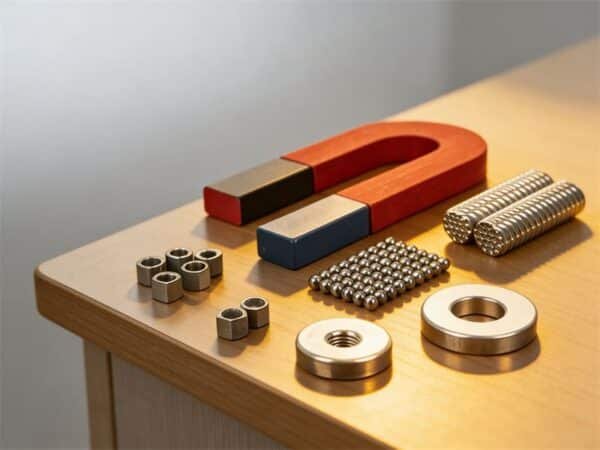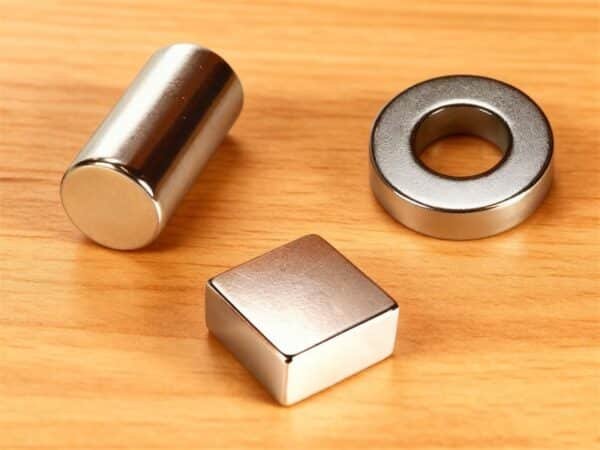The strongest permanent magnets that are currently available include Neodymium magnets, also known as NdFeB magnets. They are small yet powerful, and as such, they are used in electronics, motors, medical equipment, and also in DIY projects. Due to this power, most people question whether they are safe or not.
The answer is yes, but only with care. They are very powerful compared to the normal fridge magnets and can pinch your skin, cut into sharp pieces, or damage electronic gadgets. They are particularly hazardous to children and should not be regarded as toys.
They can be used safely by adults provided they observe good safety practices and ensure they are stored properly.
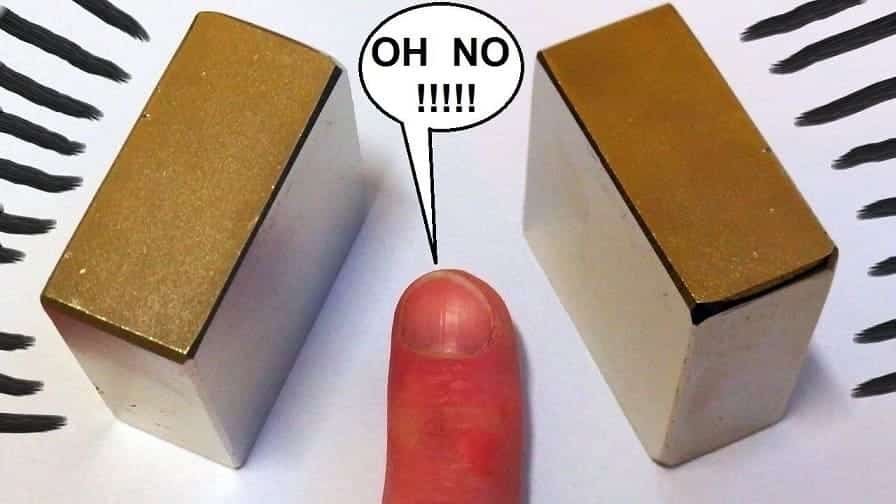
The dangers of neodymium magnets
Neodymium magnets are quite handy, but they are also more harmful than the normal ones because they are quite strong. The risks are underestimated by many people. The key risks are as follows:
Magnetization
Neodymium magnets are highly powerful in size.
· They can “jump” onto metal or other magnets from a surprising distance, which often leads to painful pinches or crushed fingers.
·Their strong field can wipe data from credit cards, damage electronics, or interfere with pacemakers and other medical devices.
·They retain their strength over decades, unlike weaker magnets; thus, the threat remains.
Neodymium magnets are at risk of cracking or shattering
Although they are strong, the neodymium magnets are weak and break easily.
Hitting two magnets will cause them to crack or shatter instantly. When you are not covered, sharp pieces may fly out like miniature blades and cut the skin or even injure the eyes.
Once broken, the protective coating chips away, the magnet starts to corrode, and handling it becomes even more dangerous.
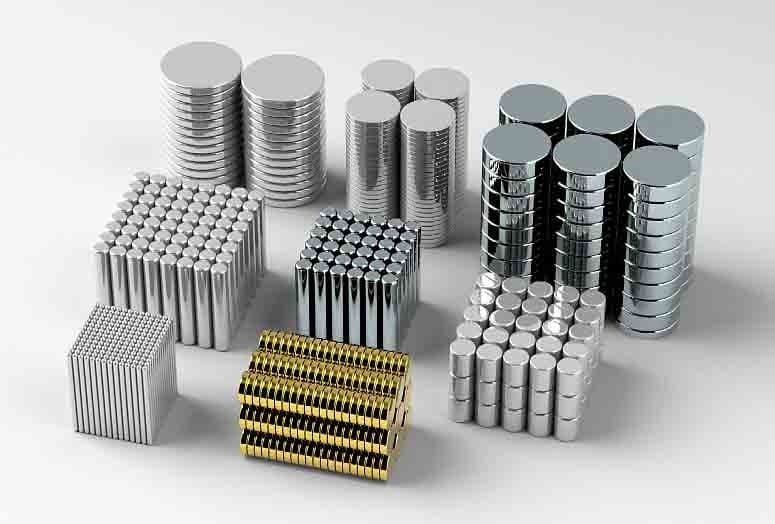
What are the risks of neodymium magnets to children?
In children, the neodymium magnets are unsafe. This is primarily due to swallowing. When a child ingests more than one magnet, then he or she may attract them within the body. It can pinch internal organs and lead to serious and life-threatening injuries.
They may have to be removed through surgery. Even touching them is unsafe for children. Their fingers may be pinched, or they may break the magnets by accident. This is the reason why the sale of strong magnets as toys has been prohibited in many countries. Children should not be allowed by their parents to play with them.
Are neodymium magnets harmful to adults?
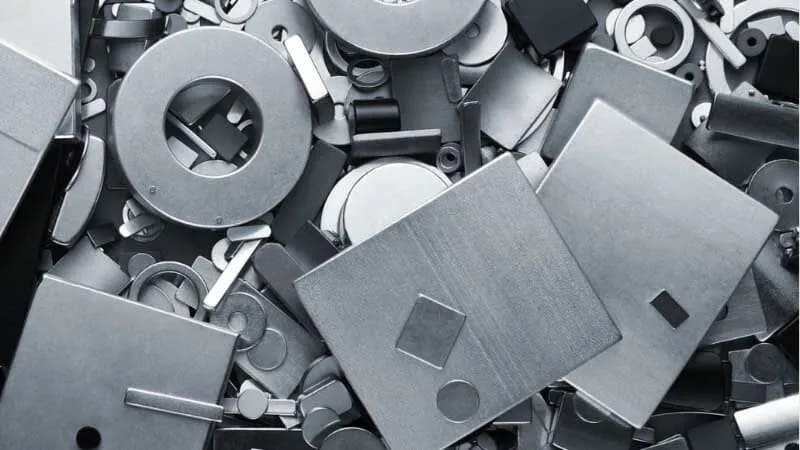
With adults, the neodymium magnets are not normally dangerous, provided that they are used with care. They can cause:
• Finger pinches or bruises
•Cuts from broken fragments
•Injuries associated with dealing with enormous magnets with sudden force.
•Damage to pacemakers or implants (medical devices in people)
Adults with heart devices, hearing implants, or other sensitive medical equipment must be extra careful. Medical devices can be tampered with using such magnets and become dysfunctional.
What happens if you get caught in a neodymium magnet?
Getting caught in a neodymium magnet is not like getting pinched by a fridge magnet. Because these magnets are extremely powerful, the force between them can be much stronger than people expect. What happens depends on the size and strength of the magnets, but the risks can be serious.
Pinching and bruising
In the case of small to medium magnets, pinching is the most frequent injury. When a finger or the skin is trapped between two magnets, it can bruise, swell up, or get blisters of blood. The injury is aggravated by the fact that the magnets are easily snapped.
Cuts and skin damage
When a magnet contains a sharp edge or tears apart during its snapping together, it may cut skin. Such cuts can be very bloody and they may become infected when not cleansed.
Fractures and broken bones
At greater magnitudes, the pressure may be hazardous. A fractured bone can occur in a finger or a hand caught. Industrial magnets are also not very safe since they are capable of crushing equipment and injuring hands easily.
Trapped body parts
Magnets are so powerful at times that a hand or a finger caught in them is difficult to draw out. Attempts to part might do more harm, particularly when the magnets fall and reconnect.
Safety takeaway
In case you are caught, the injuries are mild bruises to serious fractures. The most effective method of preventing this is to wear protective gloves at all times, store the magnets apart using spacers, and never allow two large magnets to get a chance to become close to each other without supervision. The only actual safety measure is prevention.
Magnetically sensitive items
Neodymium magnets should never be placed near magnetically sensitive items. These include:
• Credit cards
• Hard drives
• Cassette tape or floppy disks.
• Magnetic ID cards
• Certain watches
• Medical devices
The powerful field may destroy information, ultimately harm electronics or lead to malfunctions.

What are the risks of neodymium magnets breaking?
In case of breakage of neodymium magnets, the risks are even worse. Not only is a damaged magnet weaker, but also unpredictable, and fragments of the magnet can result in injuries. The following are some of the key threats:
Fragments can cause eye damage
When a neodymium magnet breaks up, the fragments do not fall to the earth. They can move extremely fast, nearly like tiny blades being shot in the air. The fact that the fragments used are sharp and light in weight means that they can cover a shocking distance before decelerating. When any of such pieces hits the eye, it may scratch the surface, make it bleed, or even lead to permanent loss of vision. This is the reason why the use of safety glasses is advisable when working with large or powerful magnets – even a minor mishap will result in a severe eye injury.
Fragments can cause skin damage
The fractured faces of neodymium magnets are very sharp. Once two magnets collide and break, they can slice through the skin on your hands or arms. A minor puncture can cause excessive bleeding, and unless it is disinfected, it is always likely to become infected.
This risk is increased when using bare hands, as you are more likely to set up one or the other or both magnets. Big gloves can significantly decrease the possibility of cuts, and your skin can be safe in case of a magnet that chips or breaks.
Magnets could cause large fractures
The most severe injuries occur with the big neodymium magnets. When a hand, finger, or any part of the body gets stuck between two of them, the crushing power may be so great as to shatter bones. The magnets do not always have to break; in other instances, the mere force with which they collide with each other is sufficient to produce deep bruises, swellings, or fractures.
This is the reason why big magnets have to be treated with all the caution and they should be separated by spacers or other protective equipment. A magnet once broken is even more difficult to handle safely, and this puts one at a greater risk of an accident happening again.
Neodymium magnet safety precautions
To remain safe, observe the following safety measures:
• Put on safety gloves and glasses.
• Keep them away from children.
• Don’t let them snap together.
• Do not be exposed to fire or very high temperatures.
• Do not leave them outside stores.
Powder is flammable
The other fact is that powdered neodymium burns easily. Magnets are sanded, drilled, and ground, and this releases fine powder, which can ignite and cause fire. This is why magnets must never be cut or drilled unless it is done by professionals using safety equipment.
Corrosion in humid environments
Neodymium magnets are susceptible to rusting under wet air. The majority of magnets are covered by nickel, zinc, or epoxy. In case of coating destruction, the magnet may corrode and weaken. Keep them in arid locations so that they can be long-lasting.
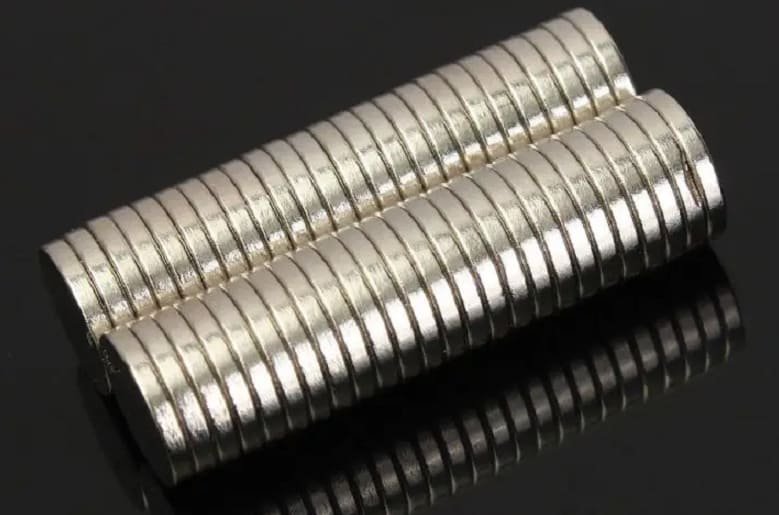
How to properly store neodymium magnets?
It is not just about proper usage, but also proper storage. This is how you can store neodymium magnets:
- Keep them in a dry, clean place.
- Pack them in cushioned containers so as not to break.
- Large magnets should also be spaced to decrease the force.
- Sign warnings for the storage area.
- Avoid electronic and magnetic storage.
- Good storage minimizes accidents and increases the magnet’s life.
How to safely handle neodymium magnets?
Because neodymium magnets are powerful and fragile at the same time, handling them with care is very important. Here are the main safety steps to follow:
1. Observe personal protection
Always protect yourself when handling these magnets. Wear safety glasses to guard against flying fragments in case a magnet breaks. Use thick gloves to avoid cuts, pinches, or crushed fingers if two magnets snap together.
If you are working with larger magnets, it’s also a good idea to wear protective clothing, since even small fragments can fly off and cause injury.
2. Follow instructions when handling neodymium magnets
Neodymium magnets should never be treated like ordinary magnets. Handle them slowly and carefully — never let them slam into each other or onto metal surfaces.
When separating them, use proper tools like spacers or sliding techniques instead of pulling them apart with your bare hands. Always keep them away from children, pets, and people with pacemakers or other medical implants, as the strong magnetic field can cause serious harm.
3. Store neodymium magnets properly
Proper storage is just as important as careful handling. Keep magnets in a cool, dry place to prevent corrosion. Store them far away from electronics, bank cards, and sensitive equipment. For safety, use plastic or wooden spacers between magnets to prevent accidental snapping.
Large magnets should be kept in sturdy boxes or containers with clear warning labels so they don’t pose a hidden risk to anyone nearby.
Last Word
Neodymium magnets are effective and strong devices. Their power brings danger along. They can pinch, break, break bones, or tamper with electronics. They pose a special threat to children, and that is why they should never be treated as toys.
Adults can use them safely by observing safety precautions, putting them on, and storing them appropriately. Admire their influence and you shall dodge the greater part.
FAQs
What to do if a neodymium magnet breaks?
Carefully collect the fragments while wearing gloves and safety glasses. Dispose of them safely, as broken pieces are sharp and still magnetic.
What are the side effects of neodymium magnets?
They can cause cuts, pinches, or fractures if mishandled. Their strong fields may also interfere with pacemakers and sensitive electronics.
What are the disadvantages of neodymium magnets?
They are brittle and can shatter on impact, creating dangerous fragments. They also corrode easily if the protective coating is damaged.
Are neodymium magnets hazardous?
Yes, if not handled correctly, they can cause serious injuries or damage. Proper protection, storage, and handling are essential for safety.

I’m Ben, with over 10 years in the permanent magnet industry. Since 2019, I’ve been with Osenc, specializing in custom NdFeB magnet shapes, magnetic accessories, and assemblies. Leveraging deep magnetic expertise and trusted factory resources, we offer one-stop solutions—from material selection and design to testing and production—streamlining communication, accelerating development, and ensuring quality while reducing costs through flexible resource integration.
